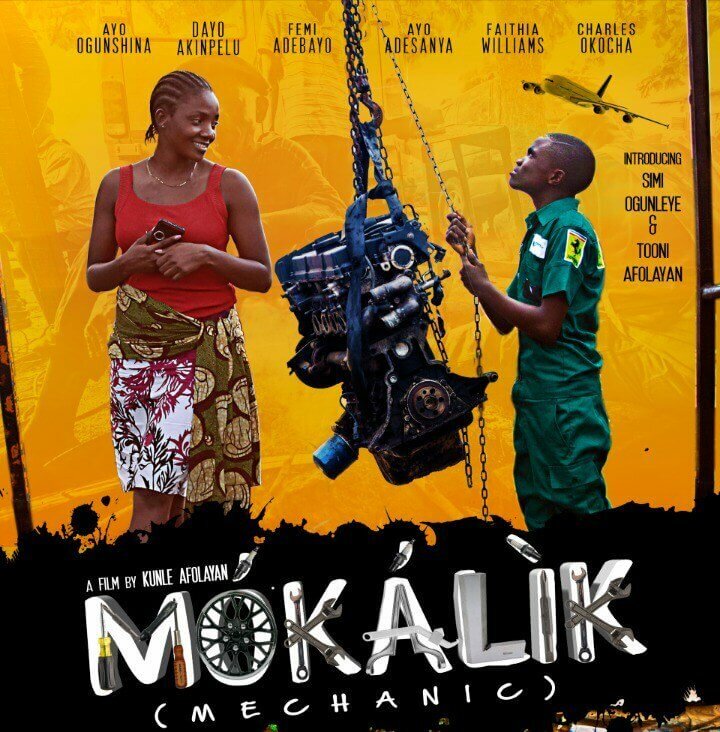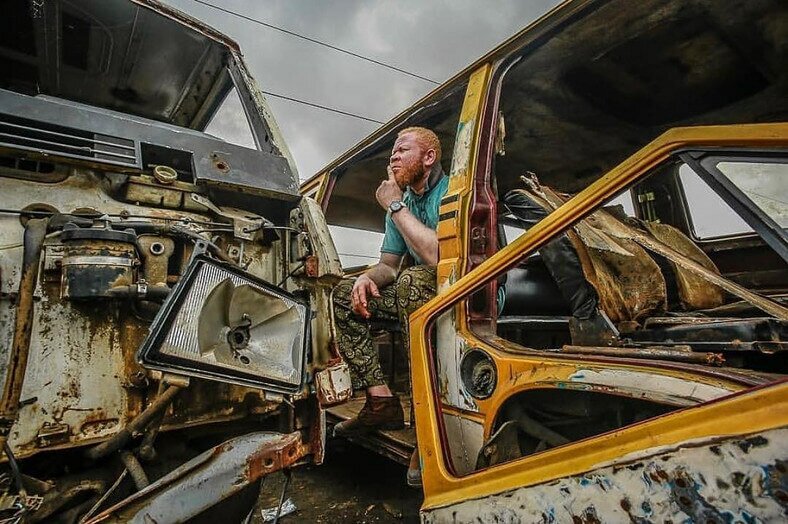BY ‘SEGUN ODEJIMI
Nollywood filmmaker, Kunle Afolayan loves history, culture and the Yorùbá language. His background is undoubtedly to thank for this. Afolayan’s father, Adeyemi was one of the not-so-many Yorùbá filmmakers who made entertainment in the 70s and 80s. Since leaving the world of finance for this profession, he’s made a film about a figurine, a mystery preceding Nigeria’s independence, as well as several documentaries surrounding culture. So, no surprises that he tells a story that sits for the greater part of twenty-four hours in a mechanic workshop.
In Mokalik, talented singer Simi Ogunleye (Simi) makes her debut alongside another of Afolayan’s finds (he’s also related to the filmmaker) – Tooni Afolayan. 11-year-old Jaiye (Tooni) is sent by his parents to work at a mechanic workshop for the day in order to give him a different perspective on life. Jaiye is expected to make up his mind if he wants to continue with his middle-class enabled formal education or become a mechanic apprentice. Of course at the end of the day, he learns new things, sees like from a different perspective and meets various characters domiciled in the mechanic village.
One of them is Obama played to the tee by Damilola Ogunsi. Obama is a Yankee deportee who finds himself in this village. Ogunsi wears the coat and hoodie of this role brilliantly and is among those actors who deserve some accolades (oh yes, Charles Okocha is also in this film complete with his bag of social media boffola).

To be able to tell this story successfully, Afolayan employs some of the constants of the Yorùbá arm of Nollywood. Lateef Adedimeji, Femi Adebayo, Faithia Williams, Ayo Adesanya, Olayiwola Razaq (Ojopagogo), Ebun Oloyede (Olaiya Igwe), Dayo Akinpelu popularly known as Alabi Yellow and TV/film veteran Ayo Ogunshina (Papa Lolo) help Mokalik retain its indigenous balance. The lingo of most mechanic villages in Lagos is Yorùbá and these actors bring their individual flavours into this local dish. Of this lot, Lateef Adedimeji gets a bit more screentime and his improv skills and brilliant acting plays a big part in retaining the entertainment value Mokalik brings to your screen.
However, there are quite a number of bits where the viewer may become confused as to whether the film is what Afolayan and co say it is or a documentary of a mechanic village. The pacing of the story is one of the major weakness here. It takes almost too long to get going, and when it does, it seems some of the actors were so concerned about adding to their screentime that they sauntered around in slow motion.

The female lead, Simi’s acting struggle in the first few scenes reinforces the claim that this is a professional debut in acting for the adored serenader. And even though her acting became better as the film wore on, we the fans of her music need not fear that she might ditch singing for acting any time soon.
Making this film in the Yoruba language is an almost compulsory masterstroke by Afolayan. It allows for the nuances of a typical southwestern Nigeria mechanic village settle so sweetly in the film. This film in the English language would have been a disaster. Not just for the story, but for the onscreen interpretation of the various human characteristics in a mechanic cluster. However, this masterstroke will mean that some of these nuances will arrive in front of the majority of the non-Yorùbá understanding audience semi-dead despite the subtitling. This is no one’s fault, really. It is not the filmmaker’s, neither is it the fault of the actors’ or the eventual audience. It is simply what happens when a language (with a richness like that of Yorùbá) is interpreted for the benefit of a “foreigner”. Several particles are almost certain to go missing in translation.

At the same time, with all its lingo, one wonders why even when the workers refer to themselves, they use the word “mechanic” frequently when “mecho” is a more commonly-used slang in a place like this. Also, with the exception of Samuel Ajibola and to an extent Ogunsi, the younger actors struggled with their Yorùbá. It is a reflection of today’s society, anyway, as many members of the new generation either speak their local languages with real struggle or they do not speak or understand at all. This case could be argued for the actors in the film, only that this is a mechanic village featuring mostly members of the lower class. So excuses for this struggle are thin.
It is increasingly becoming difficult not to think Kunle Afolayan-Pat Nebo is a combination made in heaven anytime one sees this filmmaker’s work. Art direction is simply brilliant in Mokalik. Kunle Adejuyigbe does commendable work with the photography too but overall sound design is once again another head-scratching theme for me in an Afolayan movie. In fairness, though, sound design is still a problematic element for almost all Nigerian filmmakers.
In all, Mokalik is a better film than many that have strolled into the cinema this year but a few things could have been better, especially the story written by Tunde Babalola.
And yes, Tobi Bakre plays Simi’s love interest, but let’s not talk about his overacting.


Lovely review,gives an insight of the movie without spoilers. Thanks